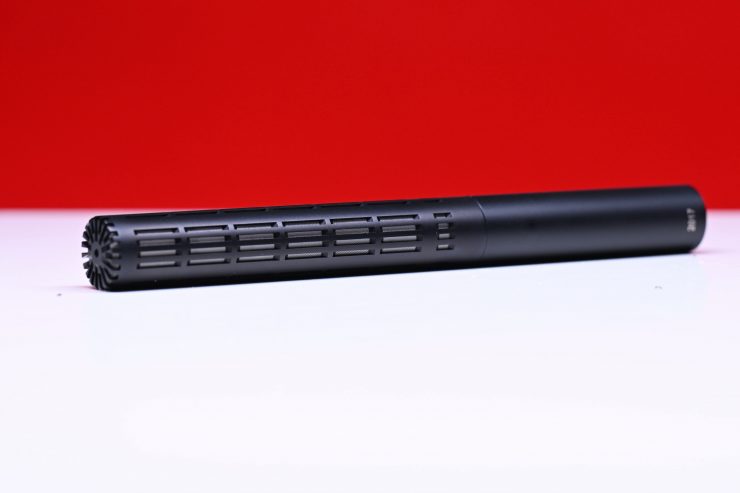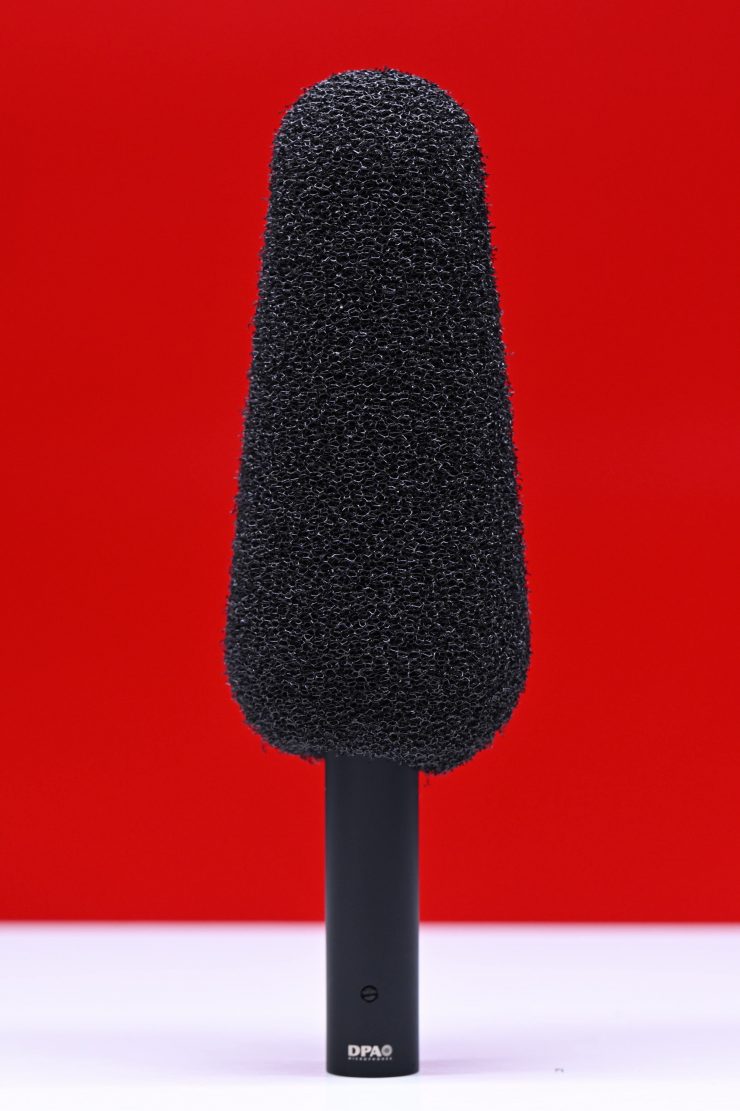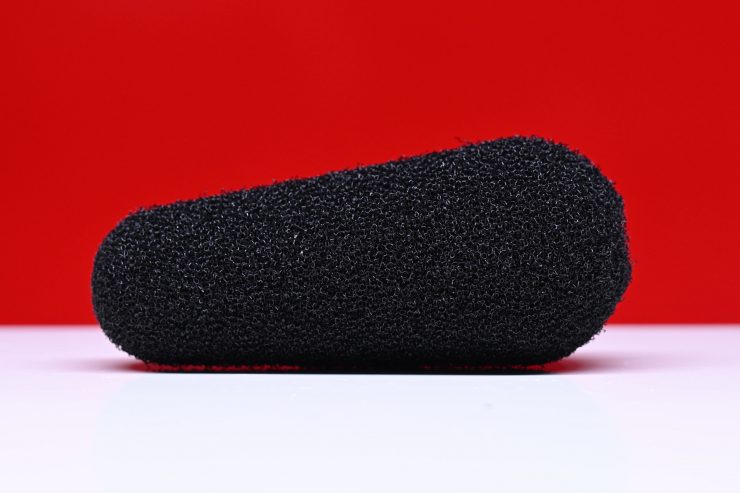
The DPA Microphones 2017 Shotgun Microphone was designed to capture authentic sound with high directivity, clarity, and consistency in challenging broadcast scenarios. It features a durable design and the ability to withstand any environment or extreme application.

DPA is touting the 2017 shotgun microphone as an ideal solution for broadcast and live events, from traditional news and sports to location sound or musical performances.

Key features
- Accurate, clean sound from the primary sound source combines effortlessly with natural sound captured off-axis
- Extraordinary durability, with reinforced construction to perform in challenging environments, including high humidity
- Outstanding off-axis rejection for optimal isolation of the desired sound source
- Can be used for Broadcast (Live streaming, sports events, ENG), Theater (FOH boom, fly bar), Location sound (in- or outdoor booming), and Live events
Who is DPA Microphone?
If you are not familiar with DPA Microphones, they are a Danish company that has more than six decades of world-class microphone design experience. They started back in the 1950s, when their predecessor, Brüel & Kjær, developed the first, precisely accurate measurement microphones.
DPA Microphones Key fACTS
- DPA’s 4006 Omnidirectional Microphone is one of the most accurate pro-audio mics in the world. It was directly adapted from an original Brüel & Kjær measurement microphone
- If you took a DPA miniature mic capsule, enlarged it to the size of a soccer pitch and started up a jet engine 60 meters away, the diaphragm would only move 4 mm.
- Two DPA microphones were used to record the Apollo 13 liftoff. In addition, the Mars 2020 Rover landed on Mars in 2021 with a 4006 Omnidirectional Microphone and captured the sounds of Mars
- DPA mics are used to record all types and levels of sound across the globe – even on Antarctica, where they were used to capture the (very quiet) sound of snowflakes
What do you get?

The DPA Microphones 2017 comes with the following:
- 1x 2017 Shotgun Microphone
- 1x Microphone Holder
- 1x Windscreen
- 1x Practical zip pouch for storage and transport
Size & Weight

The DPA Microphones 2017 shotgun is 184mm / 7.24″ in length, which makes it more compact than many other popular solutions on the market. It weighs in at 4.1 oz / 115 g.
| LENGTH | WEIGHT | |
| DPA Microphones 2017 | 184mm / 7.24″ | 4.1 oz / 115 g |
| Sennheiser MKH 416 | 249.94mm / 9.84″ | 6.17 oz / 175 g |
| Sanken CS-M1 | 103mm / 4.06″ | 1.94 oz / 55 g |
| Sanken CS-1e | 181.5 mm / 7.15″ | 2.82 oz / 80 g |
| Rycote HC-15 | 155mm / 6.1″ | 3.2 oz / 90 g |
| Rycote HC-22 | 221mm / 8.7″ | 3.5 oz / 100 g |
| RODE NTG3 | 255mm / 10.04″ | 5.75 oz / 163 g |
| Sony ECM-678/9X | 254mm / 9.9″ | 7 oz / 198 g |
| Audio-Technica BP4073 | 233mm / 9.17″ | 3.49 oz / 99 g |
| Shure VP89S | 239mm / 9.43″ | 4.1 oz / 116 g |
| Ikegami MC-20R | 220mm / 8.66″ | 2.47 oz / 70 g |
| Neumann KMR 81 i | 231mm / 9.09″ | 5.11 oz / 145 g |
| Schoeps MiniCMIT | 151mm / 5.94″ | 2.75 oz / 78 g |
| Schoeps CMIT 5 | 251mm / 9.88″ | 3.35 oz / 95 g |
Above you can see how this weight compares to other competing shotgun microphones on the market. Please note these weights are just for the microphone and they don’t include the mount, etc. As you can see the DPA Microphones 2017 is a similar length to the Sanken CS-1e, but shorter than microphones such as the Sennheiser MKH 416.

Above you can see how the DPA Microphones 2017 compares in size with the Sanken CS-M1 and the RODE NTG-5.
Is using a shorter shotgun microphone a compromise?

Although the 2017’s outer housing is shorter than some other shotguns on the market, the actual interference tube is approximately the same length.
Generally, the longer the interference tube is, the more directionality a mic has. However, with the 2017, the physical parameters of the microphone’s outer housing/grille do not always reflect the actual length of the interference tube and therefore it is misleading to try and judge a shotgun’s directionality. just based on its length alone.
While the total length of the 2017 is shorter than other shotgun microphones, the length of the interference tube itself is very much on par with all widely-known short shotgun microphones on the market. This means that the 2017 offers comparable directionality, but due to the design, the off-axis pickup of the 2017 is much more uniform than similar shotguns.
Every decision made during the design process was made by optimizing theoretical algorithms and performing extensive design modeling. This scientific approach allowed DPA to understand and break apart the dependencies between approximately 100 parameters, each of which influences mic performance. The end goal was to identify and overcome challenges and, in the end, design a shotgun mic without compromising on clarity, consistency, or durability.
Build Quality

The build quality of the DPA Microphones 2017 is very good. It features a reinforced construction so that it can perform in challenging environments, including high humidity.

There is no direct connection between the durability of a microphone and its cartridge type. The technology used for the capsule and the structure protecting it determines the resistance of the microphone against moisture, temperature changes, and mechanical impact.
DPA Microphones designed the encapsulating structure without moving mechanical parts by finding the right thickness of the material and ideal uniform pattern of slits on the grid. According to the company, this makes the microphone extremely resistant to mechanical impact.


RODE NTG-5 (Left) & DPA 2017 (Right) 
Sanken CS-M1 (Left) & DPA 2017 (Right) 
RODE NTG-5 (Left), DPA 2017 (Middle) & Sanken CS-M1 (Right)
Above you can see the differences between the DPA Microphones 2017, Sanken CS-M1, and the RODE NTG-5.

In terms of humidity and condensation, the 2017 has been designed to perform perfectly and without any interruptions, even under persistently hot and humid conditions of 40OC (104OF) and 90% relative humidity. It also performs flawlessly in cold environments down to -40°C (-40°F). The 2017 was also designed to survive exposure to direct rain showers and it is claimed to dry up quickly to return to perfect operation faster than many other shotguns on the market. It is also claimed to be able to easily withstand and recover from condensation.
If you need to clean the 2017 you can wipe down the surface of the mic with a cloth moistened sparingly with water and soap. To disinfect the 2017, wipe down the surface of the mic with a cloth moistened sparingly with an isopropyl alcohol and water solution. Make sure that no isopropyl alcohol meets the microphone membrane.

The included microphone mount and cover are also nicely made.
I like that the mount for the DPA Microphone 2017 is all metal and that it holds the microphone securely. While this isn’t a shock mount, for using on a boom for a sit-down interview where nothing needs to move it does a great job.
The 2017 Shotgun Microphone comes with 2 years limited warranty.
Polar Pattern

The 2017 is a shotgun microphone with even, yet very directional characteristics. It is attenuated at 90° (around -10 dB) and reaches maximal rejection around 125° (more than -20 dB). According to DPA Microphones, its polar pattern provides a more even pickup of on-scene sound sources than most other shotgun microphones and a larger rejection of out-of-scene noises, achieving a better overall performance than typical highly-directional microphones in its class.
Microphone Design

The 2017 features a very directional pick-up pattern, with an effective interference tube in a compact housing. It was designed to be easy to set up, position, and use in fixed positions, on booms, and on camera systems.

The 2017 is a pre-polarized condenser microphone. It has a specifically designed Ø17 mm (0.67 in) capsule tailored together with the interference tube to meet the specific needs of a shotgun microphone.

The main challenge for a shotgun with an interference tube is that the off-axis response is often quite different from the on-axis response, which then results in an unnatural overall pick-up. Traditionally, the on-axis response curve is especially valued since it focuses on the main sound source, but off-axis sound also adds to the overall response and sound of a microphone.
Due to the phasing working principle (named interference), shotgun microphones have rightfully been known for their poor audio quality in any other direction than on-axis. It is often also true that when a shotgun microphone is rotated, the surrounding sound is different due to shifts in sound color. According to DPA, they have overcome these challenges with the 2017. The microphone was designed to perform exceptionally well, both on- and off-axis, providing natural sound picked up not only from the main sound source, but also from the heavily attenuated sound sources coming from the sides and the back. The interference tube, in combination with the uniform grid pattern, is claimed to provide consistent results independent of the rotation of the microphone around the central axis.
The microphone has an extreme SPL (Sound Pressure Level) handling of 143 dB SPL Peak, low self-noise of 13 dB(A) and a 130 dB dynamic range.
The 2017 is also claimed to have low self-noise, for excellent performance in quiet environments or with many open microphones.
As with all DPA directional microphones, including the modular 4017 Shotgun Mic, the 2017 exhibits the same non-coloration of the off-axis response, i.e., it sounds like what is coming in on-axis, just damped accordingly with the side and rear entries. Many other shotgun mics don’t pick up this kind of sound naturally, making the crowd noise sound more like a waterfall or even completely unrecognizable.
Low Cut Filter

The 2017 features a permanent 3rd order low-cut filter at 60 Hz to eliminate unwanted low-frequency noise such as rumble and handling noise. The filter is intentionally placed this low and steep, to ensure the richness of the voice, ambience, or other sounds. Some other shotgun microphones have either a higher cut-off and/or a longer slope which unfortunately removes a great part of the authenticity of the original sound.
The low cut filter cannot be switched off as DPA Microphone wanted to eliminate the risk of unintentionally activating or de-activating filters.
What is the difference between an RF condenser and a FET condenser like the DPA 2017?

Frequency Response

The frequency response is 20 Hz – 20 kHz, and the effective frequency range is ±2 dB, at 60 cm / 23.6″ is from 70 Hz – 18 kHz with a smooth 2 dB soft boost at 15 kHz. The frequency curve is intentionally kept flat/linear, to allow the sound designer to tailor the sound to the specific application.
Best Placement Distance
It is always important to know what the best distance is to place a microphone away from your subject. As the 2017 is optimized with a flat frequency response at 60 cm / 23.6″ you don’t want to place it any closer than this, otherwise, you will add low-end response (due to the proximity effect). However, using it close to the sound source, like for voiceovers, as a podcast mic, etc., will result in a fuller low-frequency sound (often preferred in these applications).
Competition Comparison
| DPA 2017 | SENNHEISER 416 | Sanken CS-M1 | |
| Pick-Up Pattern | super-cardioid polar pattern | super-cardioid polar pattern | super-cardioid polar pattern |
| Frequency Range | 20Hz ~ 20KHz | 40Hz ~ 20KHz | 70 Hz ~ 20 kHz |
| Sensitivity Range | 25 mV/Pa; -32 dB re. 1 V/Pa | -32 dBV/Pa at 1 kHz | -22 dBV/Pa at 1 kHz |
| Equivalent Noise Level | 13dB | 13dB | 16dB |
| Maximum SPL | 143dB | 130db | 137dB |
Above you can see how the DPA Microphones 2017 compares against the SENNHEISER 416 and Sanken CS-M1.
Wind Jammer

The included wind jammer fits snuggly over the microphone.

While it works well in normal outdoor environments you would want something thicker if you were using the microphone in windy conditions.
Real-World Performance

I was interested to see how the DPA Microphones 2017 compared to the Sanken CS-M1. I have owned the Sanken CS-M1 for quite a few years and I would use the DPA in the exact same capacity so that is why I wanted to do the comparison.
In the above test that you can listen to I have compared the DPA Microphones 2017 directly against the Sanken CS-M1. For the test, I put both microphones directly into the ARRI Audio Extension Module AEM-1 which is made by SONOSAX. All the microphones were tested in the exact same place at the exact same distance. I did this test in a normal room.
What I noticed immediately when doing the test was that Sanken CS-M1 was hotter by around 11 dB. This didn’t come as a huge surprise because DPA Microphones are well known for their high dynamic range and maximum SPL performance. The DPA needs more gain to match the loudness of the Sanken.
I liked the sound from both of the microphones and picking which one sounds better often comes down to personal taste.
The DPA Microphones, at least to my ear, had marginally better off-axis performance than the Sanken CS-M1.

I am a cameraman and not a sound recordist so I was keen to get the opinion of someone who works on features, TV shows, and commercials as a professional sound recordist so I enlisted the help of a friend of mine Edan Mason.
Here is what he had to say:
“Right off the bat, I felt the high-end sibilance ’s’ and transient ’t’s a bit stronger compared to the Schoeps microphones I’ve become so accustomed to over the years. Comparing the two mics in question though, they are so close! I’m certain that if I did a quick blind test, I wouldn’t have confidence in identifying between the two.”
“So now that this is clearly looking under a microscope, and that I’m aware of my attempt to suppress my own confirmation bias for DPA microphones, (Sanken CS series coming in right beside it though):”
“I like the “sound” of the DPA more. But I have to mention how this is beyond the realm of “which microphone is better”, this is in the realm of how the microphone colors the voice… its personal taste.”
“One thing I had to listen for again though is the off-axis rejection. They both reject well, but it sounded like the DPA had less phasing distortion in your voice in comparison. In other words, a voice that is off-axis is suppressed just as well between the two mics, but with the DPA, your voice did not sound comb-filtered as so commonly heard in super cardioid mics, it maintained the voice’s natural sound which is desirable in unscripted shooting.”
“Again, I feel like I’m tasting two well-crafted Pilsner beers and choosing which one I like more. Granted… with a grain of salt :)”
Price

The DPA Microphones 2017 Shotgun retails for $995 USD.
So how does this compare to some of the competition? Well, below you can see.
| PRICE | |
| DPA Microphones 2017 | $995 USD |
| Sennheiser MKH 416 | $999 USD |
| Sanken CS-M1 | $895 USD |
| Sanken CS-1e | $850 USD |
| Rycote HC-15 | $799 USD |
| Rycote HC-22 | $799 USD |
| RODE NTG3 | $699 USD |
| Sony ECM-678/9X | $699 USD |
| Audio-Technica BP4073 | $749 USD |
| Shure VP89S | $765 USD |
| Neumann KMR 81 i | $1,795 USD |
| Schoeps MiniCMIT | $2,226 USD |
| Schoeps CMIT 5 | $2,432 USD |
Competition

The shotgun microphone market is fairly crowded and there are lots of available options in this space. Direct competition for the DPA arguably comes in the form of microphones like the Sennheiser MKH 416, Sanken CS-1e, Sanken CS-M1, Rycote HC-22, Rycote HC-155, and RODE NTG3.
Accessories
The following accessories are available for the DPA Microphones 2017:
DUA0073 – Foam Windscreen for Shotgun Microphone. Well-suited for outdoor applications in a light breeze and for speech at close distances.
UA0961 – Microphone Holder for Pencil Microphones. This microphone holder fits all DPA mics with 19 mm (.75 in) housing. It has a unique design, which ensures that the microphone is always held securely.
S-DKF0011 – Zip Pouch
In addition, the following third-party accessories will also work with the mic.


Specifications

Conclusion

If you are a working professional and you need to do your own audio, then it is worth investing in a good quality shotgun microphone, and other audio solutions for that matter. Your microphone with outlive any camera you own and it is a good long-term investment. Too often I see working professionals who have to do their own sound using really cheap audio gear. Sound is just as important as images, but often people think of it as an afterthought.
Because of the compact size of the DPA Microphones 2017 Shotgun, you could use it as both an onboard camera microphone and a shotgun microphone for sit-down interviews, etc. For sound recordists working in a variety of different fields, it is also a great option.
The microphone sounds really good and it has excellent off-axis performance. DPA Microphones certainly knows what they are doing and the 2017 is a great addition to their lineup.
The DPA Microphones 2017 is competitively priced if you look at what its direct competition is. If you are in the market for a very versatile shotgun microphone that could be used for a lot of applications then it certainly comes highly recommended.











